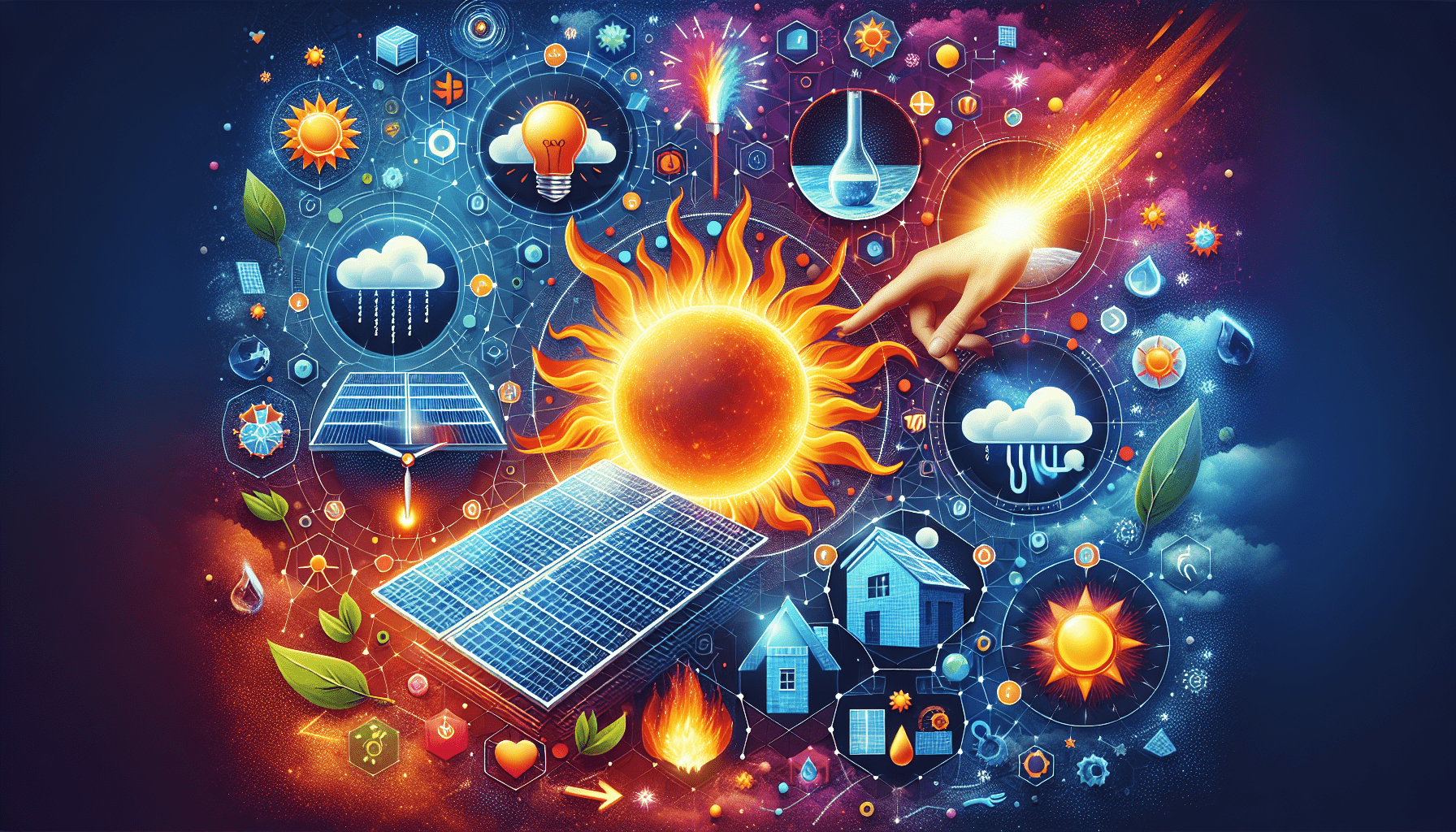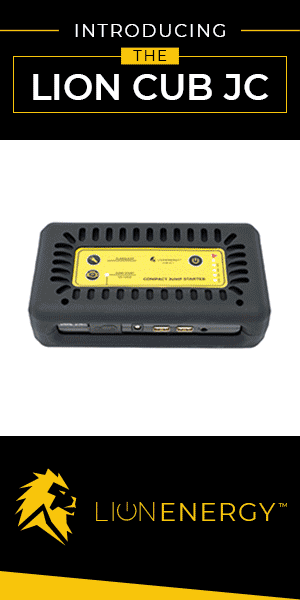Discover the four main types of solar energy, from photovoltaic solar panels to solar thermal systems. Learn how they harness the power of the sun to provide clean and renewable energy for your everyday needs.
Introduction
So you’ve heard about solar energy and how it can help save the planet while also lowering your electricity bills. But did you know that there are actually four main types of solar energy?
From photovoltaic solar panels to solar thermal systems, each type harnesses the power of the sun in its own unique way.
In this article, we’ll explore these four types and how they can provide clean and renewable energy for your everyday needs. Get ready to discover the exciting world of solar energy and all it has to offer!
Photovoltaic Solar Energy
Definition and Principle
Photovoltaic (PV) solar energy refers to the conversion of sunlight into electricity using solar cells or solar panels.
These solar cells are made up of semiconductor materials, predominantly silicon, which have the unique ability to convert photons from the sun’s rays into an electric current.
This phenomenon is known as the photovoltaic effect. When sunlight hits the solar panels, the photons dislodge electrons in the semiconductor material, creating a flow of electricity.
Components
The key components of a photovoltaic solar energy system include solar panels, an inverter, and a mounting structure.
Solar panels are made up of multiple interconnected solar cells, which are responsible for converting sunlight into electricity.
The inverter is utilized to convert the direct current (DC) electricity produced by the solar panels into alternating current (AC), which can be used to power homes, businesses, or fed into the electrical grid.
The mounting structure ensures that the solar panels are securely installed and properly angled to receive optimal sunlight exposure.
Advantages
One of the major advantages of photovoltaic solar energy is its sustainability and environmental friendliness.
Unlike traditional energy sources that rely on fossil fuels, photovoltaic solar energy produces electricity without any emissions or pollution.
It harnesses a renewable energy source, the sun, which is abundant and accessible. Additionally, once the solar panels are installed, the operational costs are relatively low as sunlight is free.
PV solar energy systems also offer grid independence, allowing for greater energy self-sufficiency and potential cost savings.
Disadvantages
Despite its numerous advantages, photovoltaic solar energy also has certain limitations. One primary disadvantage is its intermittent nature.
The amount of electricity generated by solar panels is dependent on the availability of sunlight, which is variable based on factors such as weather conditions and time of day.
This inconsistency necessitates the use of energy storage solutions or alternative power sources to ensure a continuous electricity supply.
Another drawback is the initial high cost of installing solar panels, although the prices have been decreasing in recent years.
Additionally, the efficient use of photovoltaic solar energy requires a significant amount of space, making it less suitable for densely populated areas with limited land availability.
Solar Thermal Energy
Definition and Principle
Solar thermal energy involves the utilization of sunlight to generate heat, primarily for heating purposes or to produce hot water.
Unlike photovoltaic solar energy, that converts sunlight directly into electricity, solar thermal systems capture the sun’s energy to heat a fluid, such as water or oil, which is then used for various applications.
The principle behind solar thermal energy is the conversion of sunlight into thermal energy, heating the fluid through the use of solar collectors.
Types of Solar Thermal Systems
There are two main types of solar thermal systems: active and passive. Active solar thermal systems rely on mechanical or electrical devices such as pumps or fans to circulate the heated fluid from the solar collectors to the point of use.
This type of system is commonly used in both residential and commercial applications to provide hot water or space heating.
Passive solar thermal systems, on the other hand, utilize natural mechanisms such as gravity or thermal buoyancy to circulate the heated fluid.
These systems are often integrated into building designs to provide passive heating, cooling, or ventilation.
Advantages
Solar thermal energy offers several advantages that make it an attractive option for heating applications.
Firstly, it is a renewable and abundant source of energy, as sunlight is freely available.
By utilizing solar thermal systems, households and businesses can significantly reduce their reliance on non-renewable energy sources, leading to environmental benefits and energy cost savings.
Solar thermal energy systems also have a long lifespan and require minimal maintenance, making them a reliable and cost-effective solution in the long run.
Disadvantages
Despite its advantages, solar thermal energy also has certain limitations. The main disadvantage is the inability to directly generate electricity, limiting its application to heating and hot water systems.
This dependency on heat restricts the range of potential uses compared to photovoltaic solar energy.
Another drawback is the requirement for sufficient space to install solar collectors, which can be challenging in urban environments with limited roof or ground space.
Additionally, solar thermal systems may need an alternative heat source or backup system for times when there is insufficient sunlight or high heat demand.

Concentrated Solar Power
Definition and Principle
Concentrated Solar Power (CSP) is a solar energy technology that utilizes mirrors or lenses to focus sunlight onto a receiver, generating high-temperature heat.
This concentrated heat is used to produce steam, which drives a turbine connected to an electrical generator, thus converting solar energy into electricity.
The principle behind CSP is to concentrate a large amount of sunlight onto a small area to achieve high temperatures and efficient power generation.
Types of Concentrated Solar Power Systems
There are several types of CSP systems, including parabolic troughs, power towers, and dish/engine systems.
Parabolic troughs consist of curved mirrors that concentrate sunlight onto a receiver pipe located along the focal line, where the heat transfer fluid is heated.
Power towers use an array of mirrors called heliostats to reflect sunlight onto a central receiver at the top of a tower.
Dish/engine systems involve using a parabolic dish to concentrate sunlight onto a Stirling engine, which converts the heat to mechanical power.
Advantages
Concentrated solar power offers several advantages, including its ability to generate electricity even when the sun is not shining due to its built-in energy storage capabilities.
The excess heat produced during peak sunlight hours can be stored as thermal energy, allowing for continuous power generation even during cloudy or nighttime conditions.
Additionally, CSP technology has the potential to provide large-scale electricity generation, making it suitable for powering communities or even cities.
This form of solar energy also produces clean electricity without any greenhouse gas emissions, contributing to environmental sustainability.
Disadvantages
One disadvantage of concentrated solar power is its high initial capital and installation costs, making it more suitable for large-scale applications.
The need for large areas of land for CSP installations can also be a challenge in some locations. Additionally, the maintenance and operation of CSP systems require skilled personnel due to the complex technology involved.
The efficiency of CSP systems is highly dependent on the quality and intensity of sunlight, making regions with consistent and high solar radiation more favorable for their implementation.
Solar Heating and Cooling
Definition and Principle
Solar heating and cooling systems harness solar energy to provide heating, cooling, or ventilation for buildings.
Unlike solar thermal systems, that primarily focus on producing heat, solar heating and cooling systems encompass a broader range of applications.
The principle behind solar heating and cooling is to utilize solar energy to transfer heat or coolness from a collection zone to the desired indoor space, reducing the need for traditional heating or cooling methods.
Types of Solar Heating and Cooling Systems
There are various types of solar heating and cooling systems, including solar water heaters, air heating systems, and solar-powered air conditioning.
Solar water heaters use solar collectors to heat water directly, which can then be used for domestic or commercial purposes.
Air heating systems utilize solar collectors to heat air, which can be circulated within a building, providing warmth during colder periods.
Solar-powered air conditioning systems utilize solar energy to drive absorption chillers or evaporative coolers, providing cooling capabilities without relying on electricity.
Advantages
Solar heating and cooling systems offer numerous advantages, including energy savings, reduced reliance on fossil fuels, and environmental benefits.
By utilizing solar energy for heating and cooling purposes, households and businesses can significantly reduce their energy consumption and associated costs.
These systems provide an eco-friendly alternative to conventional heating and cooling methods, contributing to a more sustainable future.
Additionally, solar heating and cooling systems can operate independently from electrical grids, providing energy efficiency and potential resilience during power outages.
Disadvantages
One limitation of solar heating and cooling systems is their reliance on available sunlight and weather conditions. The efficiency of these systems is greatly affected by factors such as cloud cover, shading, and seasonal variations.
This intermittency may require additional backup systems or alternative heating and cooling methods during periods of low sunlight.
The initial cost of installing solar heating and cooling systems can also be high, although long-term cost savings are often achieved through reduced energy bills.
Additionally, the integration of solar heating and cooling systems into existing buildings may require modifications or retrofitting, adding to the complexity and cost.


